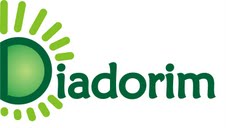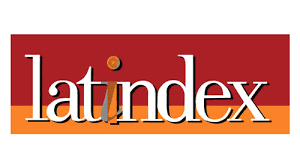MÉTODO DOS ELEMENTOS FINITOS GENERALIZADOS COM ENRIQUECIMENTO DE INTERFACE PARA MATERIAIS COMPÓSITOS
DOI:
https://doi.org/10.26512/ripe.v2i14.21369Keywords:
MEF. MEFG. Interface. Materiais Compósitos.Abstract
Este artigo tem como objetivo apresentar uma formulação não convencional do método dos elementos finitos (MEF). O método dos elementos finitos generalizados (MEFG) foi formulado a fim de melhorar a aproximação dos problemas de valor de contorno com soluções descontínuas devido a diferentes interfaces de materiais. Foi apresentado uma técnica levando em consideração a interface do material em compósitos sem a correspondência da malha de elementos finitos com o contorno dos diferentes materiais nos membros estruturais: chapas com dois materiais e compósitos heterogêneos (matriz e inclusões). Os resultados foram comparados com soluções simuladas pelo MEF, mostrando a eficiência do método e modelo proposto. A estratégia demonstrou potencial para resolver problemas com gradiente descontínuo causado pela interface material.
Downloads
References
Babuška, I.,Caloz, G., & Osborn, J. E., 1994. Special finite element method for a class second order elliptic problems with rough coefficients. SIAM Journal on Numerical Analysis, vol. 31,n. 4, p. 945 ”“ 981.
Babuška, I., & Melenk, J. M., 1997. The partition of unity method. International Journal for Numerical Methos in Engineering, vol. 40, p. 727-758.
Bathe, K. J., 1996. Finite element procedures. [S.I.]: Prentice-Hall, Inc., ISBN 0-13-301458-4.
Belytschko, T., & Black, T., 1999. Elastic crack growth in finite elements with minimal remeshing, International Journal for Numerical Methods in Engineering, vol. 45, No. 5, pp. 601-620.
Duarte, C. A., Babuška, I., & Oden, J. T., 2000. Generalized finite element methods for three-dimensional Structural mechanics problems. Computers & Structures, vol. 77, n. 2, p. 215-232.
Duarte, C. A., & Kim, D .J., 2008. Analysis and applications of a generalized finite element method with global- local enrichment functions. Computer Methods in Applied Mechanics and Engineering, vol. 197, p. 487-504.
Duarte, C. A., & Oden, J. T., 1995. Hp clouds ”“ a meshless method to solve boundary value problem. Technical Report 9505, TICAM, University of Texas at Austin.
Duarte, C. A. & Oden, J. T., 1996. An h-p adaptive method using clouds. Computer Methods in Applied Mechanics and Engineering, vol. 139, n. 1”“4, p. 237-262.
Kim, D. J., Duarte, C. A., & Pereira, J.P., 2008. Analysis of interacting cracks using the generalized finite element method with global local enrichment functions. ASME Journal of Applied Mechanics, vol. 75, pp. 763-813.
Kim, D. J., Pereira, J.P., & Duarte, C. A., 2010. Analysis of three-dimensional fracture mechanics problems: A two-scale approach using coarse-generalized FEM meshes. International Journal for Numerical Methods in Engineeriing, vol. 81, pp. 335-365.
Melenk, J. M. & Babuška, I., 1996. The partition of unity finite element method: Basic theory and applications. Computer Methods in Applied Mechanics and Engineering, vol. 139, n. 1”“4, p. 289-314.
Moës, N., Dolbow, J., & Belytschko, T., 1999. A finite element method for crack growth without remeshing. International Journal for Numerical Methods in Engineeriing, vol. 46, pp. 131-150.
Oden, J. T., Duarte, C.A.; & Zienkiewicz, O. C., 1998. A new cloud-basedhp finite element method. Computer methods in applied mechanics and engineering, vol. 153, pp. 117-126.
Plews, J., Duarte, C. A., & Eason, T., 2012. An Improved Non-Intrusive Global-Local Approach for Sharp Thermal Gradients in a Standard FEA Platform, International Journal for Numerical Methods in Engineering, vol. 91, n. 4, pp. 426-449.
Plews, J., & Duarte, C. A., 2015. Bridging Multiple Structural Scales with a Generalized Finite Element Method. International Journal for Numerical Methods in Engineering, vol. 102, n. 3-4, pp. 180-201.
Reddy, J. N. , 2006. An Introduction to the Finite Element Method 3rd ed: Mc Graw-Hill series in mechanical engineering. Inc., ISBN 0-07-246685-5.
Soghrati, S., Aragón, A. M., Duarte, C.A., & Geubelle, P. H., 2012. An interface-enriched generalized FEM for problems with discontinuous gradient fields. International Journal for numerical methods in engineering, vol. 89, pp. 991-1008.
Soghrati, S., Duarte, C. A., & Geubelle, P. H., 2015. An adaptive interface-enriched generalized FEM for the treatment of problems with curved interfaces. International Journal for numerical method in engineering, vol. 102, n. 6, pp. 1352-1370.
Soghrati, S., & Geubelle, P. H., 2012. An 3D interface-enriched generalized finite element method for weakly discontinuous problems with complex internal geometries. Comput. Methods Appl. Mech. Engrg, n. 217-220, pp. 46-57.
Strouboulis, T., Babuška, I. & Copps, K., 2000. The design and analysis of the Generalized Finite Element Method. Computer Methods in Applied Mechanics and Engineering, v. 181, n. 1”“3, p. 43-69.
Zienkiewicz, O. C., Taylor, R. L. & Zhu, J. Z., 2005. Finite Element Methods ”“ Its Basic and Fundamentals 6th ed. Elsevier, Inc., ISBN 0-7506-6320-0.
Downloads
Published
How to Cite
Issue
Section
License
Given the public access policy of the journal, the use of the published texts is free, with the obligation of recognizing the original authorship and the first publication in this journal. The authors of the published contributions are entirely and exclusively responsible for their contents.
1. The authors authorize the publication of the article in this journal.
2. The authors guarantee that the contribution is original, and take full responsibility for its content in case of impugnation by third parties.
3. The authors guarantee that the contribution is not under evaluation in another journal.
4. The authors keep the copyright and convey to the journal the right of first publication, the work being licensed under a Creative Commons Attribution License-BY.
5. The authors are allowed and stimulated to publicize and distribute their work on-line after the publication in the journal.
6. The authors of the approved works authorize the journal to distribute their content, after publication, for reproduction in content indexes, virtual libraries and similars.
7. The editors reserve the right to make adjustments to the text and to adequate the article to the editorial rules of the journal.









